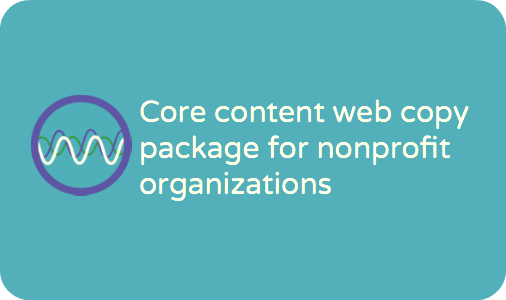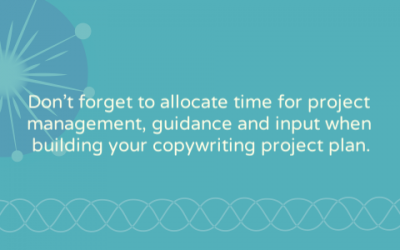When you’re crafting emails for your nonprofit, you need to get people to open the message – so you need to know how to write great email subject lines. But once the message has been opened, what can you do to ensure people keep reading your message and then click on your links?
This is a question I’ve received from a few blog readers. I love answering reader questions, but the truth is, I’m not an email marketing specialist. So, I turned to a few copywriting and content marketing pros and I asked them for their top tips.
Here are six tips for crafting nonprofit emails that get read and clicked
Share a great story
“Stories can be full of emotion. Stories are how we’re wired to absorb information. So, with each email you craft, instead of a list of updates, decide which part of your nonprofit’s story you’re going to tell. Keep the narrative tight. Think about emotion, not just facts – what do you want your reader to feel when she reads your message?”
-Mary Cahalane, Hands-On Fundraising
Carefully consider and place attention-grabbing words
“Use a subheading at the top to focus their attention on what you are writing to them about. I call them FAMOUS LAST WORDS. What do you want the reader to know above all else!
Use words in the beginning that are irresistible: FREE, Now, You, Instantly and new!”
-Joe Waters, Selfish Giving
Have a “clickable ask” high enough so they don’t have to scroll down to find it
“Making it as easy as possible for readers to act is key. One of my clients that has had the most success with their emails makes sure to embed a link to the ask as close to the top of the email as possible, so that the reader can see it (and hopefully click it!) without scrolling down. Their typical email begins with a brief and emotional description of the problem they’re trying to solve, how they’re solving it, and how you, the reader, can help.
Since that can be a lot to fit in to a couple of brief paragraphs, and since every reader is looking at the email with a different device or email program, they also include a clickable ask link in a box at the top that is completely separate from the story they’re telling. Having so many asks can seem like overkill, but it’s all about making it as easy as possible for the people on their email list to contribute.
A typical email might look something like this:
Dear [Name],
This wonderful thing is being threatened by this event/group. You and I don’t want that to happen.
That’s why we are doing something about it.
[clickable link to donation page] Help stop this threat. Give $XX today.
Now, let me give you much more background about this issue.
[Another link to the donation page at the end of the message.]”
Be relentlessly focused
“Focus is needed because you have only seconds before your email is discarded or forgotten. Identify the most important thing and be ruthless about cutting everything else out.
Every email should have a specific message and a specific call to action. Repeat the call to action throughout the email, but resist the urge to add new ones. If the email is an appeal, focus on the ask – don’t add information about your upcoming events.”
-Mary Cahalane, Hands-On Fundraising
Keep it real
“Short and sweet. Personal. To the point.
Think of emails that people receive on a daily basis. Really, hundreds if not thousands. Yes, most of it is junk. But emails from real people are, well, real. They are short, sweet, personal, friendly, and to the point.
If I open your email and it looks like you are trying to sell me diet pills that are sourced from moon rocks and goat tears, I’m not going to read.
Likewise, if it looks like Annie Leibovitz is trying to sell me designer handbags, I’ll shrug and delete. That is to say, if it looks too much like an advertisement, I’ll feel like someone is trying to sell me, not warmly communicate with.
I realize there are all kinds of schools of thought on this – and I guess it really all comes down to who you are, what you’re trying to say, and who you’re trying to connect with. If you’re a big name charity, you’ll communicate via email differently than if you are a small, grassroots organization.
Be authentic. The internet is full of phonies – do your donors a favour by being one of the realest things they read on their screen all day.”
-Sheena Greer, Colludo
Choose plain text format
“Don’t doubt the power of the old-fashioned plain-text email for high click-through-rates! The most successful emails I send are the ones that are stripped of fancy formatting and images, and just use plain text instead. These are the types of emails we send person-to-person, so they help prevent the “marketing alarm bells” that go off in the heads of recipients.”
-Andrew Littlefield, WeDidIt
6 tips for crafting #nonprofit emails that get *read and clicked* #NPMC Click To TweetMore help with crafting nonprofit emails
While I was preparing this post, three very complementary and useful articles came across my desk.
1. This post from ConvertKit, The Anatomy of The Perfect Email repeats some of the tips above, adds several more and the graphic that accompanies the post can serve as a template for each email you craft. It was written for bloggers, not nonprofits, but I think you’ll find many of the tips quite useful.
2. Heather Ratcliff published Get Your Email Read on the Getting Attention blog. You should definitely read the full post, which takes us a step back to the strategy side, with reminders such as:
- Hone your segmentation strategy to ensure emails are read by people who matter
- Shape your e-news around a clear brand, message, and call-to-action
…along with a breakdown of how to implement this advice.
3. From Hubspot, How to Create an Email Newsletter People Actually Read offers useful advice about strategy, copy and design.
Finally, with all of these points in mind, you can see why pdf newsletters won’t work and need to end. Yes, they still exist: I see them more often than you might think!
Are you already following the tips above? What would you add?
Note: I’ve been asked about how to improve the performance of digest-style emails, which many nonprofits produce. Looking at all of the tips and advice I’ve rounded up above, digest-style emails seem to run counter to best practices: do you have any advice on how to improve their readability and click-throughs? Or should we be abandoning the format altogether?


![Internal copy review pet peeves – and help with getting useful feedback [includes swipe copy]](https://moflow.ca/wp-content/uploads/2021/02/sharable-boxes-3-400x250.png)

